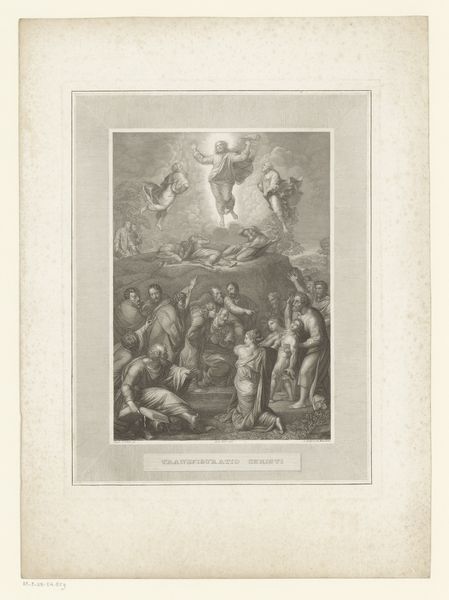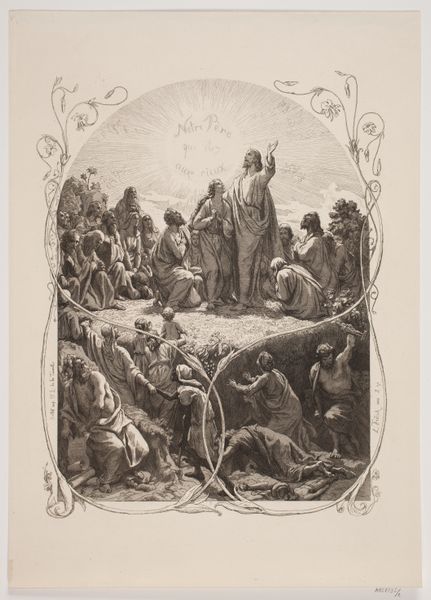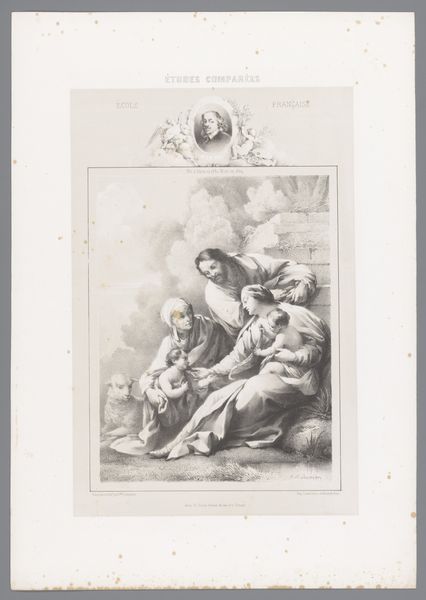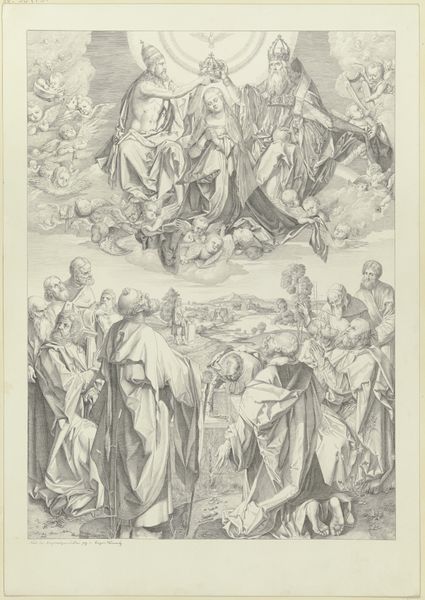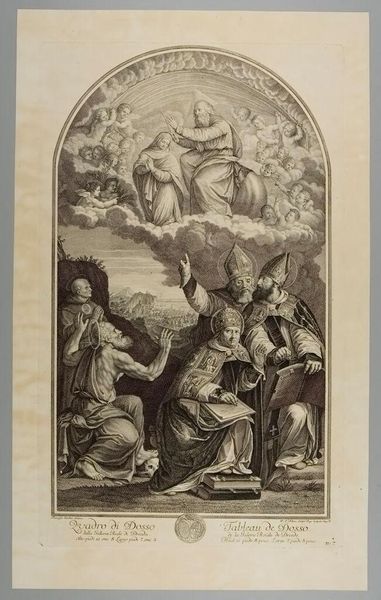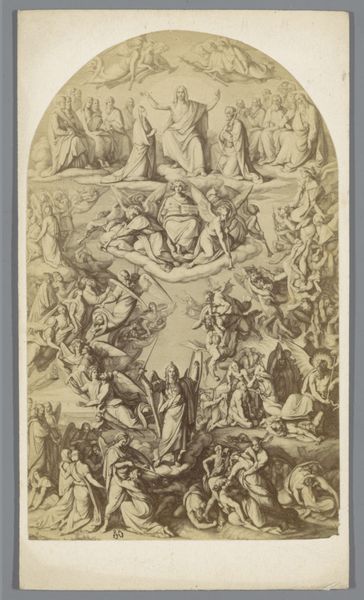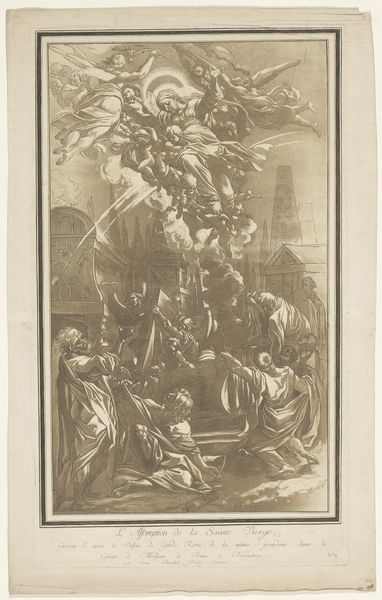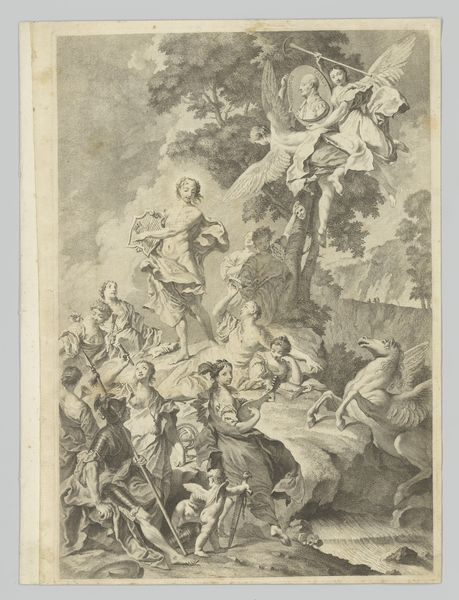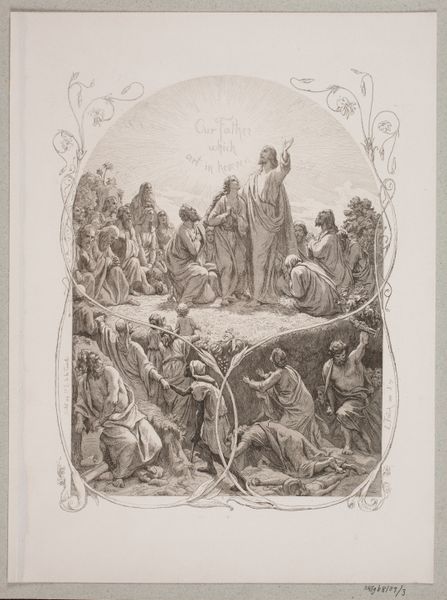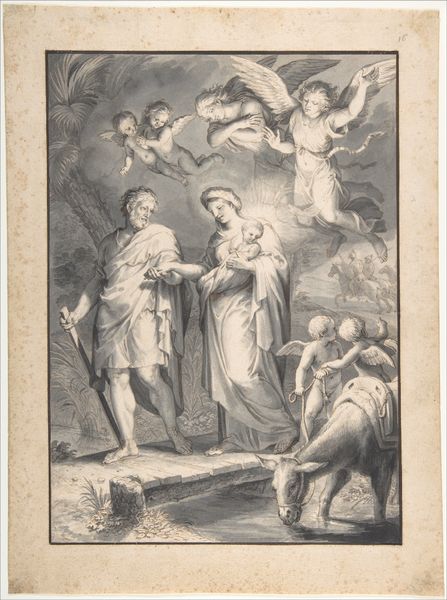
Fotoreproductie van Hemelvaart van Maria door Peter Paul Rubens 1850 - 1900
0:00
0:00
Dimensions: height 164 mm, width 107 mm
Copyright: Rijks Museum: Open Domain
Curator: At the Rijksmuseum, we see here a photogravure dating from 1850-1900, titled "Fotoreproductie van Hemelvaart van Maria door Peter Paul Rubens," which translates to "Photographic reproduction of the Assumption of Mary by Peter Paul Rubens." Editor: It’s quite striking how this sepia tone and the photo medium mute Rubens’ vibrant drama, lending it a solemn, almost haunting quality. The ascending figures appear caught between dimensions. Curator: Indeed. It's important to remember this isn’t the original painting but a reproductive print made through photography. Consider the labor involved in meticulously recreating Rubens' brushstrokes via photochemical means. The transfer itself, making art accessible through mass reproduction changes the value. Editor: Speaking of process, even in reproduction, you can’t ignore the compositional strategy. The strong diagonal thrusts drive the eye upward, from the earthly observers to the heavenly host, organized within a very deliberate arched format, containing what I understand to be Mary's triumphant rise to heaven. The angels arranged as visual guideposts further enforce the narrative of ascension. Curator: And who benefits from these easily distributed copies? Prints like these allowed a wider audience—parishioners, perhaps, or those devoted to Marian veneration—to contemplate Rubens' religious narrative in their homes. What socio-political impact did that proliferation create in the cultural milieu of the late 19th century? Editor: True, it underscores that, irrespective of medium, some aspects remain paramount. Form communicates feeling, guiding the gaze to understand symbolic weight through formal decisions. Curator: And yet, the choice of photography alters the very reception of Rubens’ art. The indexical nature of photography suggests veracity, framing the spiritual event with a patina of 'reality' while transforming it into an artifact of photographic and printmaking technologies. Editor: Perhaps we're both circling the same symbolic nexus after all. This 'reproduction' straddles the earthly, labor-intensive realm of the printmaker, and aims for the ineffable, ascending world of faith, through manipulating tones of light to produce awe, even in monochrome.
Comments
No comments
Be the first to comment and join the conversation on the ultimate creative platform.
